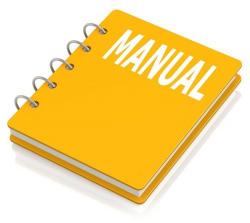Bobcat 2100, 2100S Utility Vehicle Factory Service & Shop Manual
Catalog:
Model:
Complete workshop & service manual with electrical wiring diagrams for Bobcat 2100, 2100S Utility Vehicle. It's the same service manual used by dealers that guaranteed to be fully functional and intact without any missing page.
This Bobcat 2100, 2100S Utility Vehicle service & repair manual (including maintenance, overhaul, disassembling & assembling, adjustment, tune-up, operation, inspecting, diagnostic & troubleshooting…) is divided into different sections. Each section covers a specific component or system with detailed illustrations. A table of contents is placed at the beginning of each section. Pages are easily found by category, and each page is expandable for great detail. The printer-ready PDF documents work like a charm on all kinds of devices.
6901986 (5-09) - 2100, 2100S Operation & Maintenance Manual.pdf
6901987 (5-09) - 2100, 2100S Service Manual.pdf
6987392 (4-09) - 2100 Operation & Maintenance Manual.pdf
EXCERPT:
"SECTION 5 – ACCELERATOR AND BRAKE"
"PEDAL ASSEMBLIES"
"DANGER"
"• See General Warning, Section 1, Page 1-1."
"WARNING"
"• See General Warning, Section 1, Page 1-1."
"BRAKE PEDAL"
"See General Warning, Section 1, Page 1-1."
"BRAKE PEDAL REMOVAL"
"1. Make sure the key switch is OFF and the Forward/Reverse handle is in NEUTRAL. Remove the key."
"2. Disconnect the battery cables as instructed. See WARNING To avoid unintentionally starting... in General Warning, Section 1, Page 1-2."
"3. Disconnect spark plug. See WARNING To avoid unintentionally starting... in General Warning, Section 1, Page 1-2."
"4. Place chocks under rear wheels and lift front end of vehicle with a chain hoist or floor jack. Place jack stands under the outer front I-beam of the vehicle frame and lower the vehicle onto the jack stands (Figure 5-2, Page 5-3). See following WARNING."
"WARNING"
"• Lift only one end of the vehicle at a time. Use a suitable lifting device (chain hoist or hydraulic floor jack) with 1000 lb. (454 kg) minimum lifting capacity. Do not use lifting device to hold vehicle in raised position. Use approved jack stands of proper weight capacity to support the vehicle and chock the wheels that remain on the floor. When not performing a test or service procedure that requires movement of the wheels, lock the brakes."
"5. Remove the brake pedal assembly."
"5.1. Remove the bolt (9) and nut (19) (Figure 5-1, Page 5-2)."
"5.2. Remove nuts (4), washers (6), bolts (7), and mounting blocks (5). If the mounting blocks (5) show signs of excessive wear, or are damaged, replace with new ones."
"5.3. Remove nut (3) and brake stop bumper (2)."
"5.4. Lift pedal assembly (1) through the floorboard (Figure 5-3, Page 5-3)."
"BRAKE PEDAL INSTALLATION"
"1. Insert the brake pedal assembly (1) through the top side of the floorboard (Figure 5-3, Page 5-3) and install the brake pedal stop bumper (2) and nut (3) (Figure 5-1, Page 5-2) but do not tighten."
"2. Position and attach brake pedal assembly and mounting blocks (5) with bolts (7), washers (6), and lock- nuts (4). Tighten to 70 in-lb (7.91 N·m) (Figure 5-1, Page 5-2)."
"3. Attach the equalizer rod (10) to the brake pedal assembly (1). Tighten to 17 in-lb (1.9 N·m)."
"4. Adjust the brake pedal. See Brake Pedal Adjustment on page 5-3."
"5. Connect the battery cables, positive (+) post first, and tighten terminals to 20 ft-lb (27.1 N·m). Coat ter- minals with Battery Terminal Protector Spray (CC 1014305)."
…





